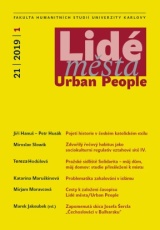Problematika zahalování v islámu
Hidžáb jako výraz segregace, emancipace i politické strategie
DOI:
https://doi.org/10.14712/12128112.3255Klíčová slova:
gender anthropology, veiling, Islam, woman in Islam, modestyAbstrakt
Anthropological texts dealing with cultures of the Middle East often reflect on the role of women in Muslim societies. One of the main points of discussion when it comes to Muslim women is undoubtedly their public appearance, whereupon these women are most often seen veiled. Indeed, a veil, or hijab, has become one of the primary symbols of a Muslim woman when in public. While the veil can take on different forms, it has also come to symbolise a range of different things. The main objective of this paper is the analysis of the main approaches to the phenomenon of female veiling in Islam. It draws on the concept of bargaining with patriarchy as outlined by Deniz Kandiyoti, while discussing the various positions on hijab as analysed by female anthropologists with a personal connection to the broader Middle Eastern region. The paper traces the origins of female veiling, its symbolism, and its forms in the 21st century. Special attention is paid to the case of Iran, whose legislation requires women to wear the veil in public at all times.
Stahování
Publikováno
Jak citovat
Číslo
Sekce
Licence

Tato práce je licencována pod Mezinárodní licencí Creative Commons Attribution-NonCommercial-NoDerivatives 4.0.


